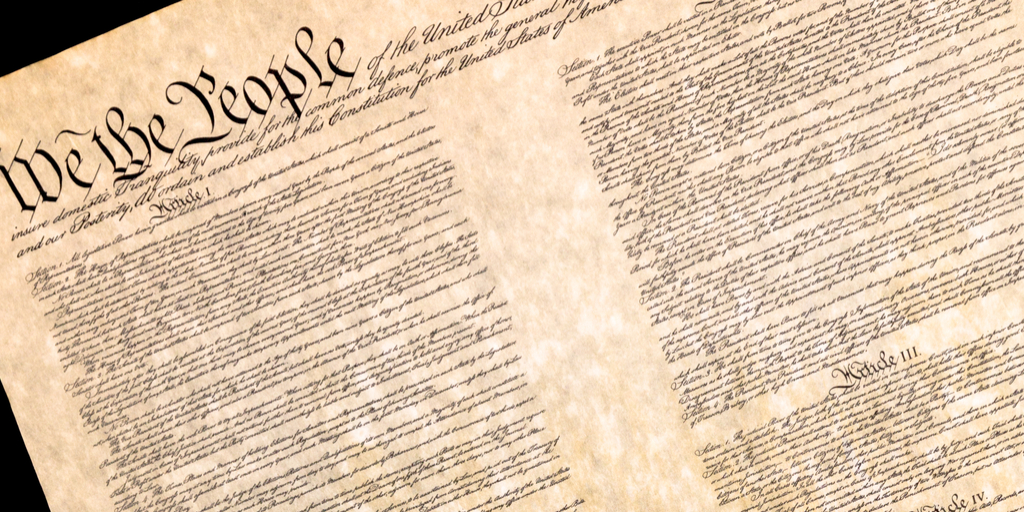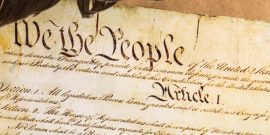Thinking about "General Welfare" in the Preamble
My L&L colleague Mike Rappaport mused last week “On the Relevance of the Preamble to Constitutional Interpretation.” I have a couple of thoughts in response.
First, I agree entirely preambles do not confer additional powers to those granted or recognized in a statute or constitution. They serve to aid interpretation of the substantive provisions of a legal text when needed to do so.
When necessary, however, an officially adopted preamble can be extremely helpful in construing legal texts. The late Antonin Scalia warred against judges using legislative intent or legislative history to construe legal texts not because knowing of the purpose for which decision-makers adopted a provision does not help judges construe texts, but because decision-makers did not speak authoritatively in those sources.
Officially-enacted statements of purpose avoid that problem. They provide purposes expressly endorsed by the enacting body itself. To be sure, not even an official-enacted statement of purpose would allow a judge to ignore the meaning of an otherwise clearly-written legal text. Nonetheless, understanding authorial purpose for a text can be critical to reading a text honestly.
That said, I think I’m more sanguine than Rappaport regarding the meaning of the preambulary phrase, “to promote the general welfare.” To be sure, Rappaport does not suggest the phrase has no discernable meaning at all—only that the phrase is “often unhelpful” because it “requires interpretation.”
Let’s think about the meaning of “general welfare” in the preamble alongside with its meaning in the first clause of Article 1, Section 8: “The Congress shall have Power To lay and collect Taxes, Duties, Imposts and Excises, to pay the Debts and provide for the common Defence and general Welfare of the United States; but all Duties, Imposts and Excises shall be uniform throughout the United States.”
First, promoting the “general welfare” stands in relation to its antonym, that of promoting a particular or limited welfare. Promoting the general welfare certainly rules out promoting the welfare of particular individuals or factions.
We could stop at that point if reading the clause in a state constitution: “general welfare” would simply mean “public welfare” in the sense of state police powers.
The national government, however, does not have police powers. A reasonable reading of the U.S. Constitution’s preamble identifies how “general welfare” differs qualitatively from its meaning in a state constitution.
To state the obvious, promoting “general welfare” means promoting “national” welfare. This contrasts not only with promoting an individual’s or faction’s welfare, but contrasts with promoting particular regional, state, or local welfare.
We can see this in several ways. First, unlike today when we refer to the “national” government, at the time of the adoption of the U.S. Constitution the national government was often referred to as the “general” government. For example, James Madison begins Federalist 41 by asking “Whether any part of the powers transferred to the general government be unnecessary or improper.”
Beyond this, the preamble itself provides evidence. The preamble situates the Constitution in a continuing project with its first statement of purpose, “to form a more perfect union.”
The Constitution exists to perfect—to mature—the already existing union.
This continuing project certainly seeks to perfect the form of the union articulated in the Articles of Confederation. The Articles’ preamble situated its provisions in “confederation and perpetual union.” Article III of the Articles of Confederation affirms that “The said states hereby severally enter into a firm league of friendship with each other, for their common defense, the security of their liberties, and their mutual and general welfare . . .”
Note here that Union began as early as the Declaration of Independence, and perhaps even earlier. By the time of the Constitution, the Declaration’s one people of the United States of America had become united in a new frame of government. Strengthening the national, or general, government to form a more perfect union was a manifest purpose of the Constitution.
Nonetheless these still were the people of the united states. Sovereignty was split.
“General welfare” for the nation, then, differs qualitatively from “general welfare” at the state level. The signature distinction is qualitative not quantitative: State general welfare does not become an issue of national general welfare simply because a local purpose can be quantitatively aggregated across each of the states. That’s still local.
General national welfare pertains to purposes and policies states could not achieve on their own in union due to systemic cooperation or coordination failures across the states. The most obvious of these pathological interstate incentive structures are the several “prisoners’ dilemmas” states faced under the Articles of Confederation, pathologies the “more perfect union” of the Constitution would remedy.
For example, foreign nations could induce tariff competition between the states. This interstate dynamic prevented states from obtaining revenues from tariffs. Centralizing power over tariffs in the national government responded to the pathological incentives states faced, allowing revenues to be raised from tariffs on imports.
While the most obvious examples, the prisoners’ dilemma does not exhaust the types of pathological interstate incentive structures. States faced coordination failures in battle-of-the sexes and stag hunt games among themselves themselves, cooperation failures in “chicken” and congestion games, as well as interstate prisoners’ dilemma games in numerous policy domains. In solving coordination and cooperation failures between the states, the Constitution’s new “general government” promoted the general, or national, welfare.
Note how this leads naturally to the general welfare clause in Article 1, Section 8. Contrary to the Madisonian reading, the taxing and spending provisions do not become superfluous by being limited to the other powers explicitly stated in that section. At the same time, the taxing and spending provisions do not provide carte blanche to the national government to do anything states can do, except aggregated to the national level.
Rather, the clause confers an additional national power to provide for the general national welfare in ways that states cannot. A judicially-applicable rule would ask something like this: What pathological incentive structures do states face deterring them separately from achieving the welfare of their people in this policy area? If the states cannot implement policies because of interstate pathologies, then and only then would the general welfare provision of Article 1, Section 8 confer authority. But solving interstate pathologies, while allowing states separately to rule themselves in the absence of those pathologies, is exactly why the national Constitution was adopted.

